The feeling you get when you can hit a tiny target, almost out of sight, is really amazing for many of us. Taking your skills to that level takes some time and training, but it’s gratifying when you achieve that next step in your shooting skill set.
One reason many shooters are moving up to longer ranges is the challenge. It’s pretty easy to hunt or plink at the range and get good hits on target sub-200 yards, but when you start to go longer, some skill and technique are involved as is the need to do some basic math and a few more tools. These complications mean that it’s harder and more time-consuming to shoot this way and that makes it appealing to those who want to go to the next level.
Here we explain the basics of how to get started in long-range shooting.

How to “ring steel” at 1000 yards
When you hit a target at 1000 yards and hear the steel “ring” it’s a real buzz! It’s a fantastic feeling being able to achieve that level of accuracy.
Achieving this goal is oriented around several key areas you’ll need to master to be consistent at distance:
- Understanding and practicing the “fundamentals” of shooting – working on your technique
- Choosing and setting up the right tools for the mission: the weapon system and associated equipment
- Using high quality, consistently accurate ammunition (match or hand loaded) in the right caliber for the task at hand
- Using a range of new skills and knowledge about how to modify the firing solution and zero, based on environmental factors
- Practicing and testing the chosen setup at distance and noting that information (DOPE) as you improve
Training, and experience, are the most critical factors for success.
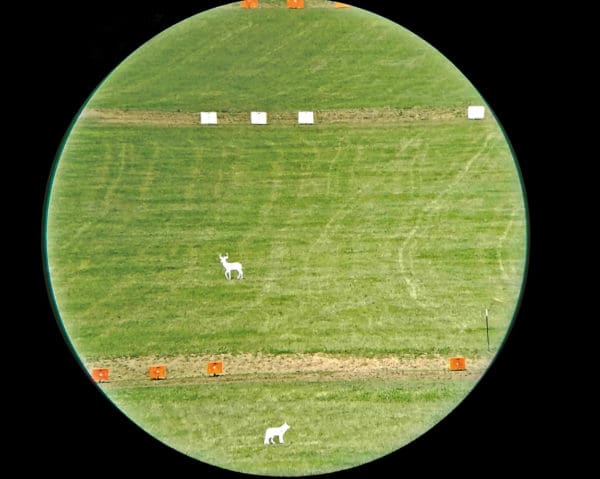
What is long-range shooting in terms of distance?
Wikipedia defines long-range shooting as “a collective term for shooting disciplines where the shooter has to engage targets at such long distances that he has to calculate ballistics, especially with regard to wind.” Bryan Litz, Founder, and President of Applied Ballistics LLC defines long-range as “where you need to make significant adjustments to your zero to hit a target due to gravity drop and wind deflection.”
There are likely many ways to categorize what long-range shooting means to different people, but we’re defining this way:
- Short range is less than 300 yds.
- Long range is 300-1200 yds.
- Extra-long (ELD) range is greater than 1 mile
What is the difference between range “plinking” and long-range technique?
The big difference between simple range target shooting and long-range precision shooting is the need to compensate for bullet drop, environmental conditions and to have the tools to figure those things out so that a firing solution can be made. Unlike range shooting or hunting at short distances where you can eyeball the bullet drop, at 1000 yards you need to be accurate, precise and to have a set of adjustments to put into your scope to compensate – you can’t really guess where the bullet will hit.
Shooting at distance also means that you need your shooting “fundamentals” to be first-rate (a stable platform, natural point of aim, proper sight alignment and sight picture plus trigger control) because any errors at all are exaggerated at long distance. Most of us are looking for sub-MOA type accuracy to be able to stand any chance at longer ranges.

What are MOA and sub-MOA?
MOA stands for “minute of angle” and the reference to sub-MOA is a way of expressing the accuracy of a rifle or shooter. One MOA at 100 yards is one inch – that means to be able to shoot sub-MOA you need to be able to shoot a group of shots that are less than an inch in diameter at that distance.

What is the best caliber for Long Range Shooting?
There is no “best” caliber. There are many choices, and these are driven by what you intend to do. If you are casually shooting, that’s one thing, vs. long-range hunting or entering a Precision Rifle Series (PRS) match. Each of these will help you decide what is best for you and each has several caliber choices to pick from. Long range shooting requires calibers that can shoot long distances, maintain velocity, and avoid deflection from the wind as much as possible.
So, for long-range hunting or target shooting, we now know we need to choose a caliber that has a high ballistic coefficient (BC…more on that later), and so the critical difference between target and hunting will be around the ability of the caliber you’re shooting to take down the target animal – small, big or large game. Also, we should consider other factors such as cost, availability, and recoil. The length of time it takes a round to remain supersonic, and its retained energy on impact are two more of the many considerations.
A common caliber for hunting (and military long-range shooting) is the .300 Winchester Magnum (Win Mag), and for target shooting today, is the family of 6mm and 6.5mm cartridges. However, there are many calibers to choose from, and it can be overwhelming trying to figure it all out. Some would say that the .300 Win Mag has been superseded by calibers around the 7mm due to having a better BC and more range. But then again, getting ammunition can be more difficult, so each choice has different considerations.
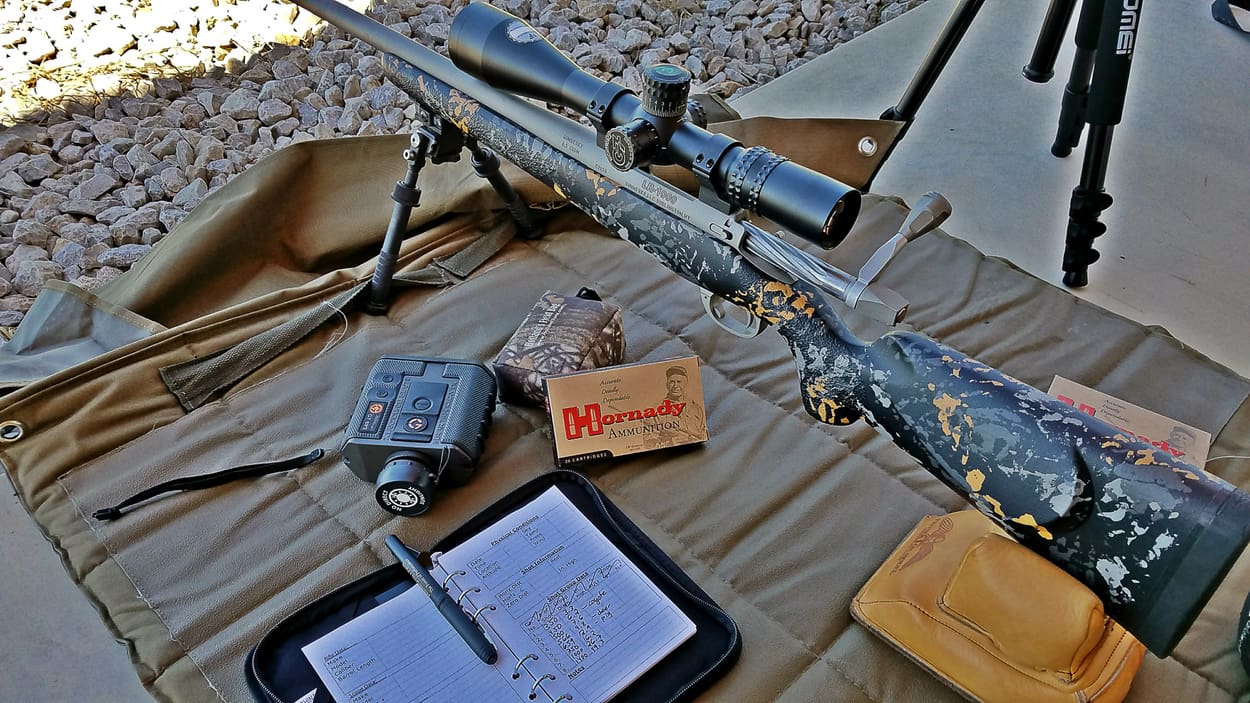
What is BC and why is that important?
BC stands for ballistic coefficient. In simple terms, this is all about the shape of the bullet. Certain bullet shapes perform better at longer ranges. They tend to have a more aerodynamic shape with a boat tail design. Each bullet has a BC number, you can find this on your box of ammo in many cases or from the manufacturer’s site.
This BC number is essential as you need it when calculating the trajectory (bullet drop) of your shots.
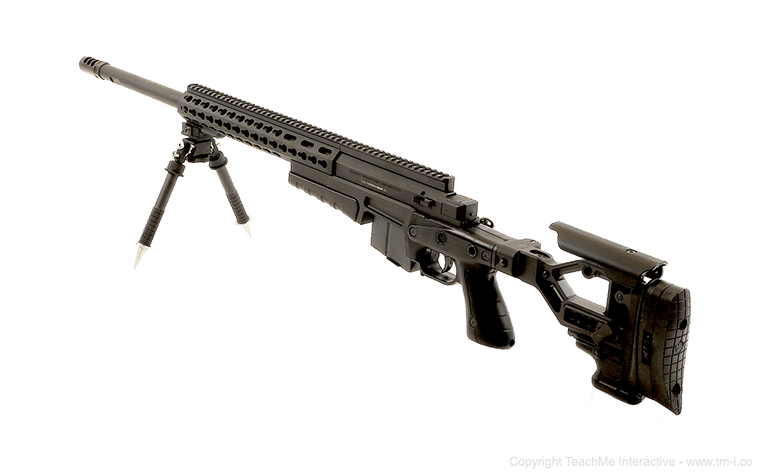

What is a precision rifle, and do I need one?
A precision rifle is simply a rifle that has been built to a higher standard in terms of components than your average hunting rifle with regard to shooting at longer ranges. It’s also likely in a chassis rather than a traditional stock, more like an AR.
Often these rifles are offered in longer range calibers and have rails for easy attachment of optics. They also tend to be heavier which helps reduce the effects of recoil.


You don’t need to have a special rifle to shoot long range, but you do need one that’s consistent and one that has a good barrel that’s chambered in the right caliber round for the distances you want to shoot.


What is the essential gear to get started?
This may surprise you, but the most significant single budget item should be your optic, not the rifle. Most good quality modern rifles, in the right calibers, can reach out to 1000 yards but the same can’t be said for lower cost optics.


Optics for long-range shooting also tend to be different than scopes geared for hunting. They usually have a bullet drop compensation (BDC) reticle with hash marks that allow the shooter to compensate for wind conditions (and even drop).


These scopes also need turrets that enable the shooter to “dial in” the changes needed for different distances. These turrets need to “track” accurately. That means they need their adjustment increments need to be precise and consistent. Cheap scopes often have issues in this area.
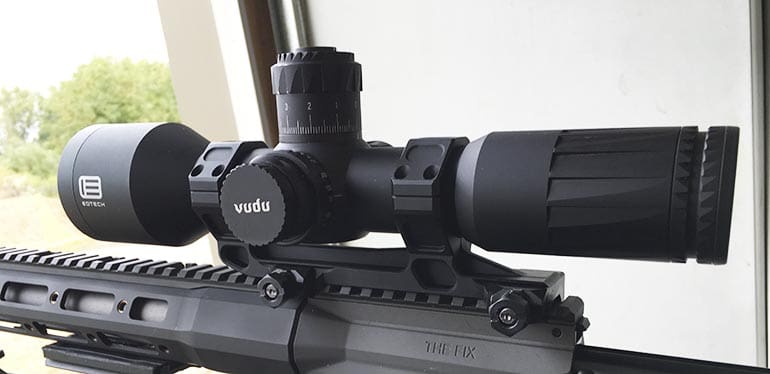

The other key feature is a parallax knob that allows the shooter to remove parallax from the scope as this will affect the final point of impact if not compensated for when shooting at distance.
Then there is the ability to read the conditions out at distance, and that requires better quality glass and higher magnifications than a “regular” low-end scope.
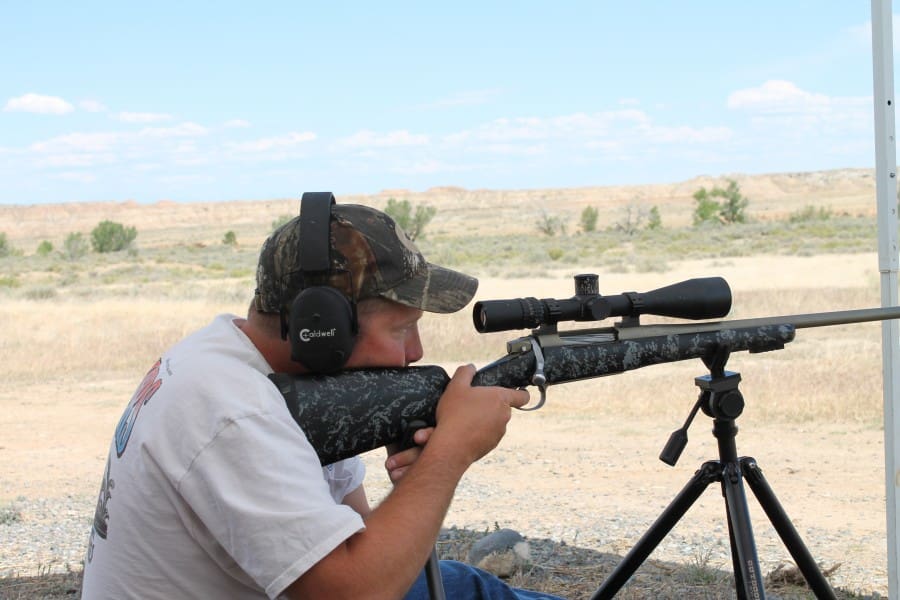

Then there is the rifle. The key is to get one with a good barrel, a good stock and one designed for the task. The average hunting rifle is not ideal for longer ranges. It may be able to do reach the distances you’re shooting for, but it’s likely not going to be consistent or repeatable, and that’s a big part of the sport…both precision and accuracy.
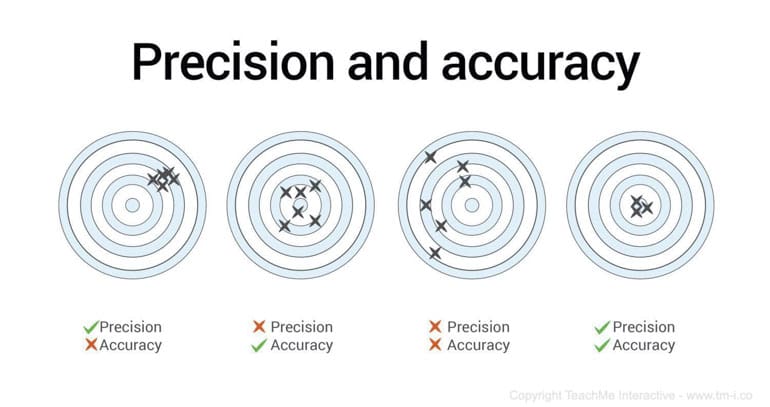

These are the fundamental basics to get started, however, you will also need a range of additional tools if you plan to do it seriously.
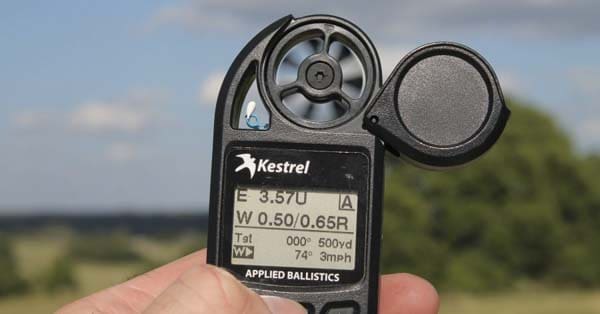

More long-range tools
The tools are what we use to determine our firing solution. They are used to estimate the wind locally, to do the same for environmental conditions that affect the trajectory of the bullet, to range the targets and to look at the environment to determine the effects of Wind, and its direction and speed down range. So, a windmeter, rangefinder and Binoculars/Spotting Scope are additional tools that are helpful.
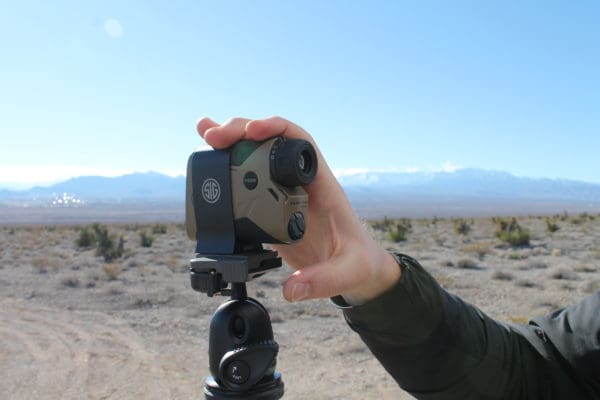

Many long-range shooters will also use a phone app to do the math required to work out the drop to the target based on the data generated by the tools. The app. will allow the shooter to create a “ballistic table” in real-time and use that data to make changes to the optics in order to hit the target.


There are plenty more options, like scope levels and bipods that should be considered – every part of the system counts as the room for error is much smaller at distance.
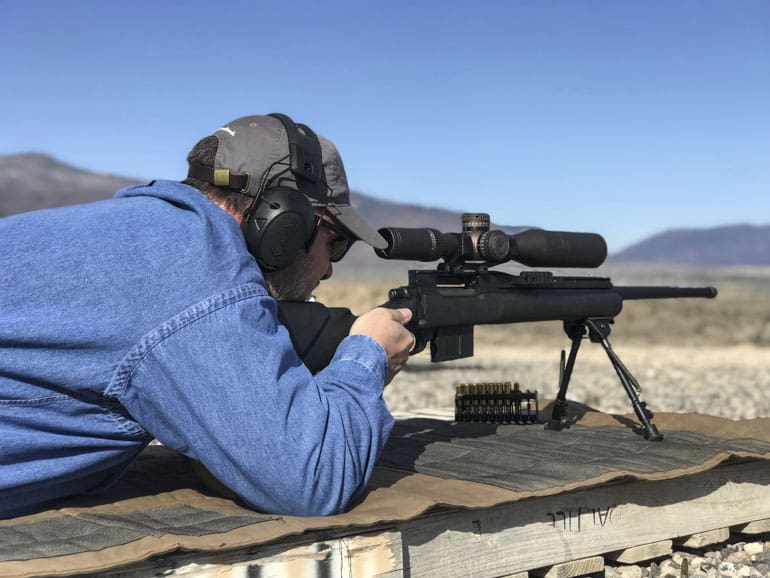
So, what does it cost to get started in long range shooting?
Long range rifles used to be designed for practiced military snipers, often based on the Remington Model 700 and other similar actions. Today, with the sport having become popular worldwide, manufacturers have stepped up, offering more cost-effective options for the general public.
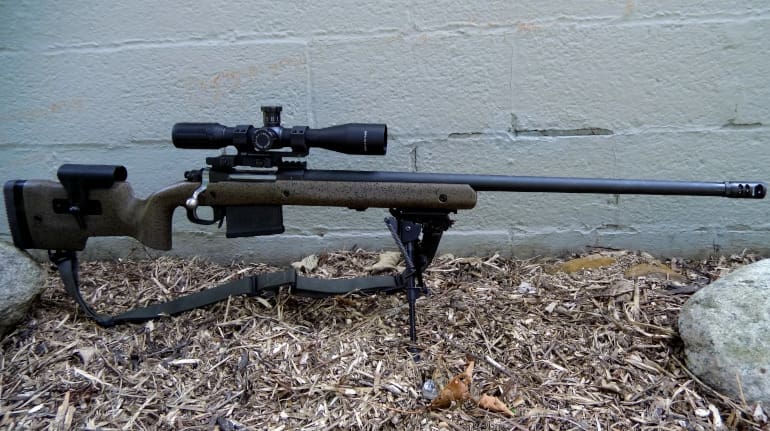

For as little as $2-3000, you can put together a very capable long-range “system” (rifle, scope, bipod, range finder, wind meter, cleaning kit, and accessories) capable of nailing long-range targets out past 1000 yards, using quality ammunition.
So, we know we need the “basics” to get started, it is best to focus on your core equipment of rifle and scope first – get the best you can, or save and make sure you have the right tools to get going. Then you can add-on the extras. A used rifle and scope can be acquired to save money…it’s all about the quality of the system that matters.
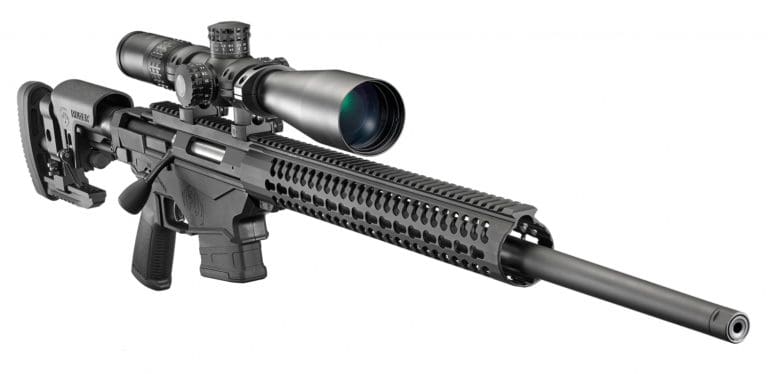

Examples of budget rifles that all claim sub-MOA accuracy out of the box at long-range are the Remington Model 700 SPS Tactical, the Ruger Precision Rifle, The Tikka T3, Browning X-Bolt Long Range, or the Savage 12 Long Range Precision just to name a few. Today we are spoiled for choices at reasonable prices.
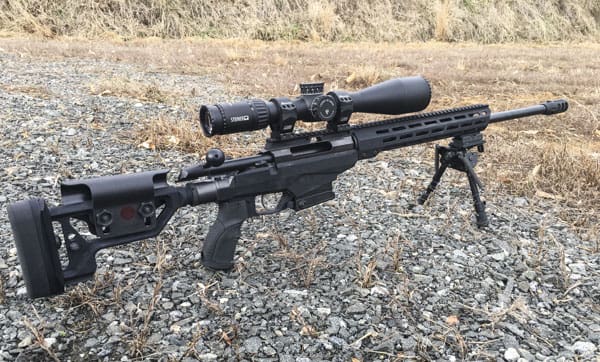

Of course, there are options to spend a great deal more, such as custom rifles from the likes of Gunwerks and GA (who specialize in long-range hunting rifles built to your specification), or the more military type from Accuracy International, Cadex Defence, Surgeon, Barrett, Blaser, Steyr, and many more.
The options are vast, and as usual with any large purchase, taking time to try out what you can, and asking questions at your local club, dealer or in Facebook groups help with making the right decision. The time-honored saying of “you get what you pay for” generally applies here as does “measure twice and cut once.”
Get the very best you can afford, especially with the optic (you usually want to spend more on tour optic than your rifle), to avoid having to trade up later. You would also do well to consider your “mission” and therefore what caliber rifle you need (hunting, target or match) before you go shopping.
In the end, you need a heavy-barreled rifle with a good trigger, bipod and quality stock, plus a good quality higher magnification scope to get started. You will also need high quality “match” ammunition, and few more optional tools, like a rangefinder, wind meter, and spotting scope, that we will cover in detail later in the course.
Long range shooting is indeed costlier than a basic hunting or target setup but is also accessible to most shooters with a reasonable budget. For as little as $3000, you can put together a “system” (rifle, scope, bipod, range finder, wind meter, cleaning kit, and accessories) capable of nailing long-range targets out past 1000 yards, using quality ammunition.
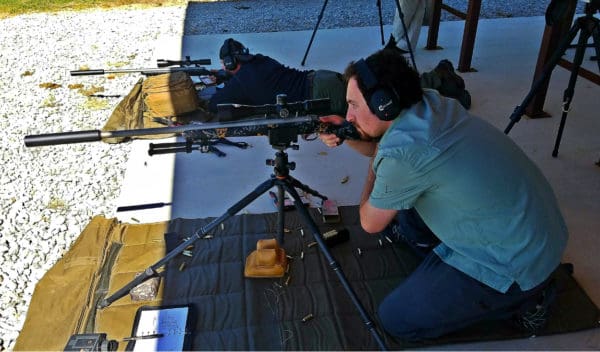

Takeaway: Don’t get caught in the equipment race.
No amount of money or equipment will buy you a spot in the winners’ circle. Buy the best equipment you can afford, find a good load for it and go practice your technique at short-range. A lot. Once you’re consistently hitting the mark at 100 yards and shooting single ragged hole groups, then it’s time to try longer ranges. Guess what the wind is doing and take a shot. Observe what happened and record that information for later use. Now rinse and repeat. Often.
So many people think it’s about the amount of money they’ve spent. In reality, it’s about the amount of time they’ve spent practicing.
What is the biggest issue when switching up to shooting long-range?
By far the hardest part of the switch is learning how to read and compensate for the effects of the wind (and other environmental factors). Wind is the big equalizer. Those that are good at reading and making changes to their shots for it are by far the best long-range shooters – even with inferior equipment. They will outshoot those not as experienced or skilled in wind reading.
Learning how to read the wind can’t be easily taught. It’s the one thing that needs lots of in-the-field experience and personal trial and error. Once you master reading the wind, you’ll be on your way to being an excellent long-range shooter.
This post really just scratches the surface, briefly hitting the high spots. Look for more on these topics in detail in future posts.
For more useful tips and learning resources visit https://www.longrangeshootingbooks.com/.

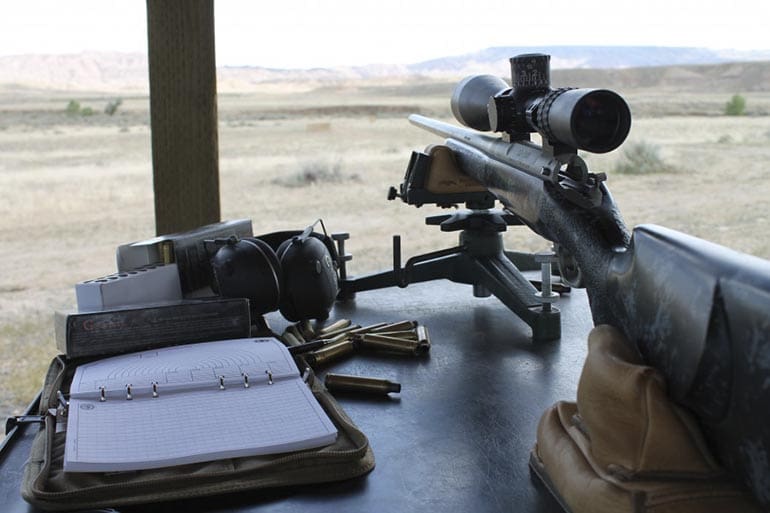
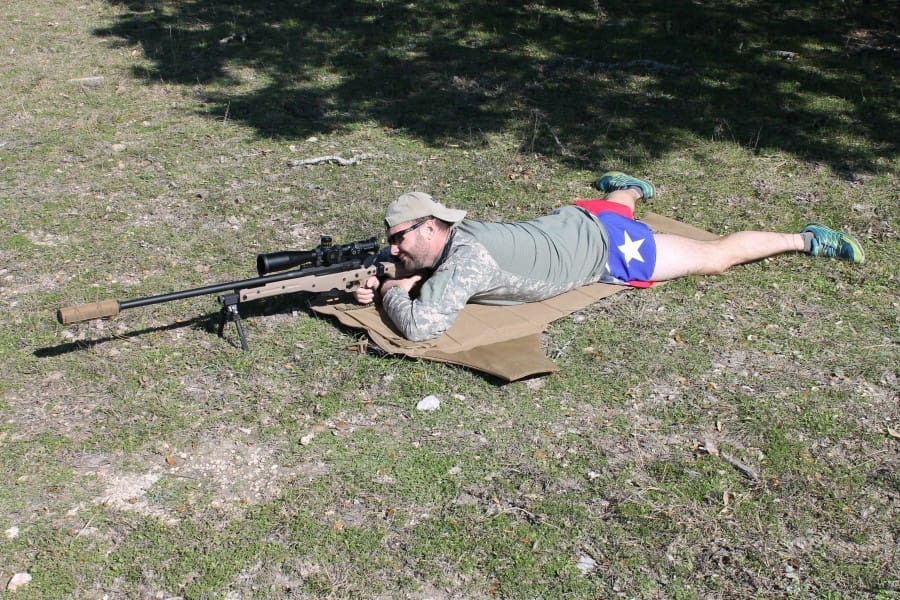



The single most useful resource I found is the “Sniper 101” series on youtube by Rex, it takes time, he goes into every detail and explains it very well.
The single most useful resource available is a local CMP club that has workable loaner rifles. While service rifle shooting is a different style of shooting at long range, it’s a better way to learn the basics than jumping into 1000 yd shoots with a scope and magnum caliber rifle. Using a foreign (to you) rifle is a good way to learn how to fix issues on the go, as well (such as incorrect zero or just how to operate your rifle under a little minor stress).
Case in point – the first time I rung steel at 1200 yds was at a SHOT range day with a rifle that was probably worth $30k and a spotter provided by the booth giving windage hold-over. I learned nothing from the experience but the booth spotter told me I hit steel on both shots.
The first service rifle match I entered was with a rented Garand and I felt like I was missing all day long. I came in 15th-20th place but first place among those using loaners. The second match I entered I placed 10th with a rented AR-15 and every single person in 1st-9th place was decked out in serious competition gear. I felt pretty damn good about what I learned in the first match, afterwards.
Yep.
Never underestimate an experienced rifleman with a service rifle if he knows how to use it.
I’m one and I do.
I was gonna say the same thing. It’s excellent.
Join a private rifle range, you will find deals on guns and gear from older club members sell equipment. I did rem 40x 308 single, custom trigger, Leupold vx3 6×20 for $350
I am shocked, SHOCKED I say, to find that the word ‘Creedmoor’ does not appear anywhere in this article!
Also, anyone have any idea where you can shoot out to 1000 yards east of the 100th meridian?
The Azores?
Here you go. 585 Park Mammoth Rd., Park City, KY
http://www.parkmammothresort.com/
RockCastle Resort out to 1600 yards
704 miles. Not bad.
We never said it was gonna be easy!
You just said east of the 100th meridian. I just happen to live in Kentucky and knew about this location though I have not been there. I have a friend and his father did a private event with his Barrett 50 and was thrilled with the instructor and the results and the membership is not expensive.
Well I knew there were a couple, but they’re few and far between. The closest place I know of is in SD and it’s an 1150 yard range (apparently there’s no 1000 yard targets up). There’s another one in western Kansas that has a 2000 yard range.
I’d just like to get up in the morning, drive to the range, take a hundred or so shots at the 1000 yard mark and make it home in time for dinner.
K&M Precision. Finger Tn. Only a few hours away from Mammoth.
Getting warmer, 671 miles.
Badlands Tactical
Grandfield, OK
1,000 Yd KD range
Nice, comprehensive article – good job! I started shooting long range in the early 2000’s. Back then it was fairly difficult to find off the shelf rifles that were up to the levels of performance needed, and there were only a few optics worth putting on the gun. Now, as you mention, the choices are broad and economical.
The only “tool” that you forgot to mention is a reliable spotter. You don’t absolutely have work with a spotter, but my buddy and I found we progressed much more quickly when we spotted for each other. The fundamentals – breath control, even heartbeat control, sight picture, etc. – can be learned pretty quickly. We’ve put absolute beginners behind a rifle and had them ringing steel within a few shots. But the experience in reading wind conditions gained through spotting and reading trace for someone else really puts you ahead of the game, even when shooting solo.
“
You can ring steel well past 1000 yards with a $600 model 700 if you use the right caliber and ammo. Learn to reload, use a spotter, and figure out the basics.
Indeed you can learn long range rifle without going broke. You’re going to spend some money, but nothing like serious trap and skeet, or even golf.
1. Get a decent, but not ridiculous rifle. I’m completely sold on Savage. I’ve go a 10FP in .308 and a 112BVSS in .30-06. A heavy barrel is a must. The nice thing about the Savages is that their laminated varmint stocks are excellent and a bargain. You just need a sling rail inlet into the fore end which has plenty of meat. I’ve got a Sharp Shooter trigger in the 10FP and a Canjar single set in the 112BVSS, but I hear good things about Savage’s AccuTrigger.
2. You MUST reload, at least eventually. Most ammunition companies don’t load true long range ammunition, mostly loading the obsolescent 168gr. BTHP in the .308. I prefer the Sierra 175gr. BTHP and N150. NOBODY makes an equivalent of my .30-06 load of a 200gr. Sierra BTHP over IMR (or Hodgden) 4350. Even at 600 yards, variations in powder charge can take you out of the ten ring. I trickle and weigh EVERY charge and get standard deviations in velocity that fully justify it.
3. Learn to read the wind from an experienced shooter. Consistent velocities and learning to read the wind are keys to success at 600 yards and beyond.
Yep. Totally agree. One thing I forgot to mention is optics! $120 scopes simply won’t do. I can, however totally vouch that the fixed power SWFA’s are a bargain. They used to be $300 and for the money can’t be beat.
Since my original intent was to shoot at Camp Perry, I ensured that I was set up for both iron sights and optics on both guns.
My iron sights are Redfield Internationals, with Tiger and Redfield front apertures.
For optical sights I went with Bausch and Lomb Elite 6300 6-24s. I have Medesha inclined one piece bridge mounts to give me enough elevation at 1,000 yards.
Wind.
I was advised that measuring the wind at the shooting position was important, as was measuring the wind at a few points on the way to the target, to get a better ‘overall’ picture of the total wind conditions.
Or, I was being lied to…
Wind at the shooting position is pretty useless. Wind downrange is much more important, can be doped with experience and a spotting scope. And more experience. Spotting scope does not need to be expensive or high power, but experience does.
Negative. The wind you are most concerned with is the first half of the flight. It has 2/3rds of the total value.
I wanted to shoot long range for 40 years before I got to try it, then discovered I was too old for the effort involved, at least in what I was interested in. This article is not addressing what I tried to do. First off, save money on your optics, use iron sights. Forget the bipod and learn to use a sling. And what distance is “long range” depends on your cartridge, for .308 I claim it is over 800 yards. 800 yards is not much different from 300 yards or 200 yards, just farther away. With iron sights and a sling, you don’t change much. Beyond 800 yards the whole game changes, because wind becomes the most significant factor. It changes between shots, to the point one 1000 yard competitor I watched at Camp Perry fired a sighting shot, made a wind adjustment, then banged out the 10 competition rounds as quick as he could load, aim and fire, without paying attention to where the last shot struck the target. NOBODY else did that, but it was a valid concept, adjust for wind only once. But silly little wind meters are cool and really help if you’re shooting at 100 yards or less, if you want to shoot longer, you need to learn to dope “mirage” through your spotting scope, if you ever do it once successfully you will be so proud you could shit. Someone can show you the idea, then your learning is your own, different from everyone else’s, requires only thousands of rounds of practice. If the mirage slopes just so, I dial in x clicks of left windage.
Learning the concept of a “Frame hold”, wherein the target is so difficult to make out that you set the entire target frame on the top of the front sight, and adjust from there, is jaw dropping amazing when it works. But shooting 9s and 10s at 1000 yards with iron sights and a sling is an experience I would not sell for any amount of money. If you want to do it, you know that. I didn’t win, I never even competed, but I hit that damn target, the one most people could not even see. 50 years after discovering I wanted to. BTW, I took a picture of the range, but the targets could not be seen. 1000 yards is a long way. 1500 yards makes me dizzy! You go, guys!
What are some places to shoot over 100 yards in Florida?
key west.
see if you can hit cuba.
The Palm beach Sheriffs range on southern Blvd in West Palm Beach goes to 200 yards one Sunday of every month. Open 2 weekends per month
Okeechobee Shooting Sports at the north end of Lake Okeechobee goes to 200 yards
Open Thursday thru Sunday.
That’s it for long range shooting open to the public in South Florida
Manatee Gun Range in Myakka City goes out to 1,00 yards
Not really in south Florida.
Okeechobee shooting sports at the north end of lake Okeechobee goes to 200 yards every day they are open. Open Thursday to Sunday
Palm Beach Sheriffs shooting range on southern Blvd. In West Palm beach goes to 200 yards one Sunday every month in summer, 2 Sunday’s per month in winter.
That is it for public long range shooting in south Florida
The first thing u need to shoot 1000yds is 1000yds. The rest is just equipment, some Federal Gold Medal Match ammo and come ups from Berger ‘s on line ballistic calculator. Its not hard but its easier with a mentor.
Peacemaker training center in Wv is good. Only knock is that the 1000 yard shooting position isn’t open every day. Also you don’t get to shoot at 1000 yards until you shoot a sub moa 5 shot group at 100 yards and are able to write up your dope chart to 1000. But it’s a friendly place where everyone is helpful and don’t mind teaching. They also do a ton of classes. It’s less than 2 hours from dc.
I’m a year into shooting long distance and as others have mentioned, hand loading might not be the only way to go, but it is certainly very helpful. While not 100% necessary a chronograph is probably way more useful than a handheld wind gauge…as consistent velocity out the muzzle is very important. You can correct a misread in the wind but you can’t correct velocity variances.
You can be out the door with a Remington 700 with a varmint profile barrel in a suitable caliber for $6-700 depending on the sale and you can get a $500 vortex optic that works just fine. You cannot go to Walmart and buy a $369 Remington 700 and do it. I know I tried. But you can build off that Walmart action if you like to do stuff yourself. I haven’t been able to source a Remington action for less than $400 but the one from the $369 gun works just fine.
Two part question.
First what range do people normally go ‘plinking’ or shooting at? I came into firearms through the Army and my rote technique is the following: zero rifle using my 25 meter target, use iron sights, and engage targets between 100 to 250 meters for fun. 50 is fish in a barrel: fun but nothing challenging.
I typically go for minute of bad guy; did I hit the target I was shooting at? I really only concern myself with grouping on my zero target. I did order the Army’s 25m qualification target for fun and use that when I don’t have a longer range available.
Second, I figured I’d start hunting in the future and was going to planning to make consistent groups inside a 10 inch circle at 100 yards. I figure that is about the size of the ‘kill box’ to aim at and 100 yards is a good distance. Is that too small a target? Too big? Too far? Too short?
If you are hunting human prey, a human chest is 18 inches wide and 9 inches tall.
A human head is 6 inches wide and 9 inches tall.
The kill zone for deer, moose and elk is usually quoted as an 8 inch circle for a body shot.
BradleyD,
As far as distances to “plink”, I choose distances by target size. For fun shooting, I like a target that is 3 to 4MOA. So at 200 yards, it’s fun to shoot an 8″ target at 200 yards. That size is not very difficult to hit, but you still have to pay attention.
As for hunting, the size of your target for hunting game very much depends on the game. The 8″ target Docduracoat suggests is a good overall rule, but the game in your area may be different. For instance, for the smaller deer we have in Central Texas, 8″ may be on the outside edges of the lungs, and will completely miss the heart altogether. 6″ is a better target size here.
For hunting, I’d say you are ready when you can consistently strike a 6″ target from the kneel at 100 yards away with a suitable hunting cartridge for the game pursued. When I say consistently, I mean 19 out of 20 times at a minimum.
Get a model 700 in 7mm rem mag from your local pawn shop and burn the barrel out. You can learn to nail a tall boy beercan at 600 yards for $600 dollars.
Start there.
It’s interesting to learn more about long-range shooting and how the optics used for this it is not the same as when you want to go hunting. I am looking up these considerations since my husband and I are interested to make gun shooting a hobby. I wonder where we could find a shop to buy some simple supplies like ammo.